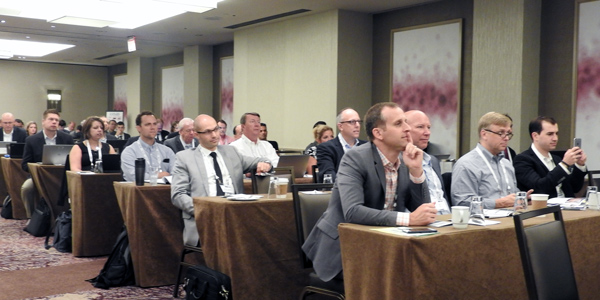The New York State Energy Research and Development Authority is now the lead agency backing a proposed 90-MW offshore wind development south of Long Island. “Offshore wind is clearly a critical part to achieving Gov. [Andrew] Cuomo’s clean energy agenda of achieving 50% by 2030. The numbers offshore are huge, with us talking about 38 GW of potential near the downstate load centers,” NYSERDA CEO John Rhodes said.
Jamie Resor, CEO of solar project developer groSolar, said his peers need certainty, and a commitment from policymakers could be more valuable than a better credit rating for a project in a state where the likelihood of a failed deal may be higher. “New York surely is not the least expensive place to do business, and it certainly is not the sunniest … but you’re in a state that has big goals, and we have a [committed] partner, and while we’re not certain how we’re going to [reach those goals], we know that somehow we’re going to figure it out,” he said.
Doug McMahon, vice president of strategy for the New York Power Authority, said the Reforming the Energy Vision promise of customer-centric engagement between energy consumers and utilities has been slow to develop.
“We’re in for an interesting year, when we’ll have a clearer understanding if there are going to be long-term successes with REV,” McMahon said. “There is increasing frustration in the amount of progress that’s being made. The substance of REV is development of market forces, and at the moment, those forces aren’t strong enough to animate the consumer or the utility into integrated action. Until we see those forces become stronger, we’re not going to see a great deal of momentum.”
Craig Lewis is executive director of the Clean Coalition, a nonprofit promoting a modernized grid to hasten the integration of renewable energy. He said failing to understand the way distributed wind, solar or storage add value to the system — in providing reactive power or resiliency to benefit system performance, for example — creates challenges.
“If you don’t understand how these resources are going to work together, there’s no possible way you can optimize them from a policymaker’s standpoint. You cannot go forward and design a market mechanism” that incentivizes participation, he added.
Mike DeSocio, senior manager of market design at NYISO, said the ISO is working on a distributed energy resources roadmap in order to determine how they affect the wholesale market.
“The questions we are trying to answer are: How do these resources interact with the ISO? What services can these resources provide, and what kind of configurations and uses are we thinking about to utilize these resources? … It’s going to be a little bit of a journey, so the way the ISO is thinking about this is in small stages of three to five years. We’re not trying to project out 20 years.”







